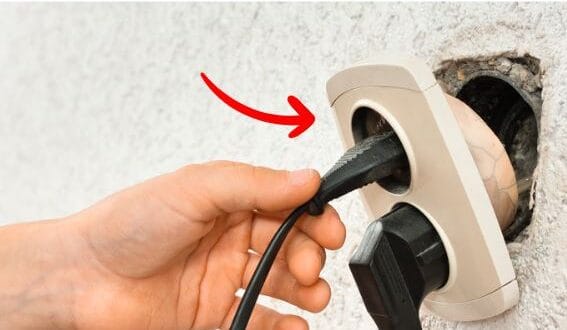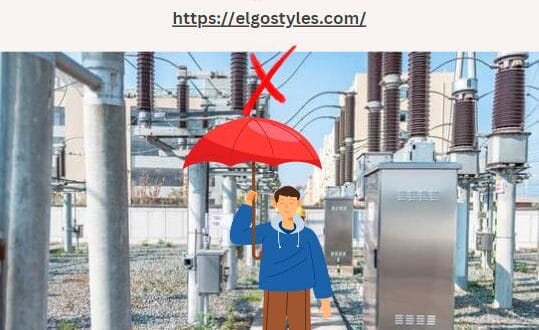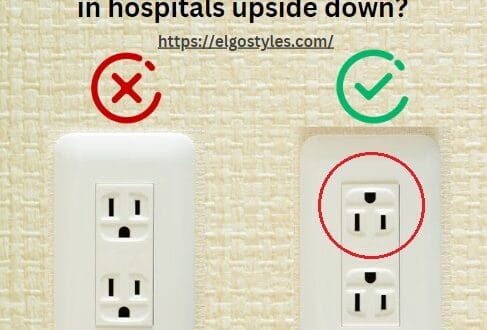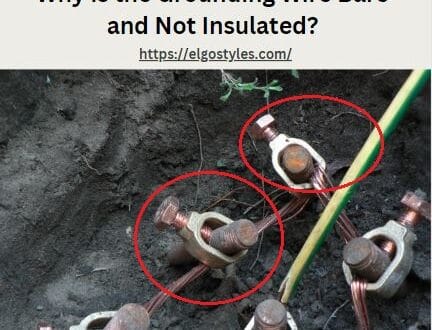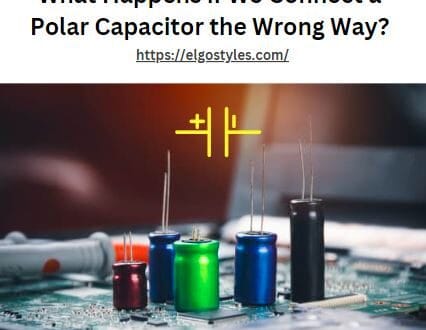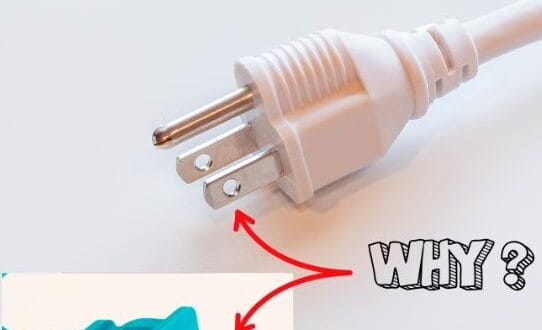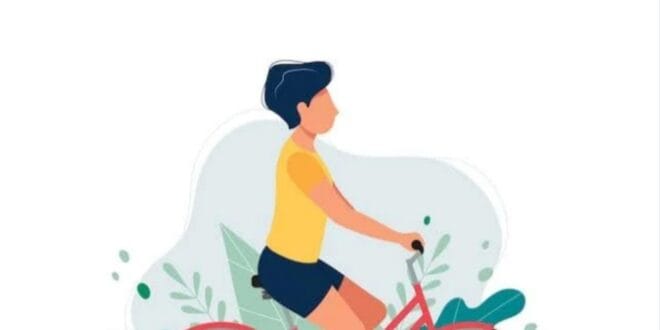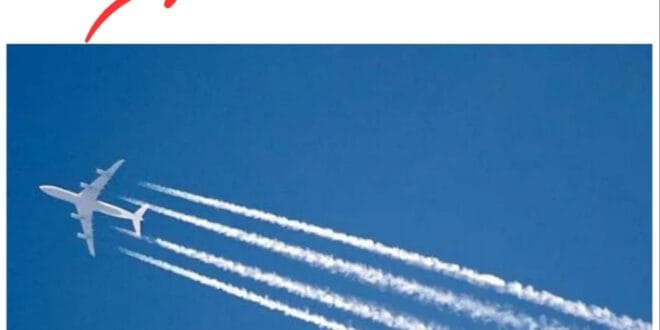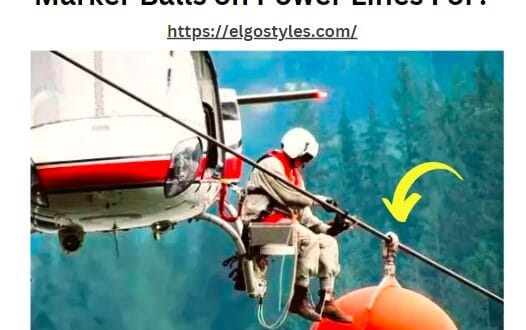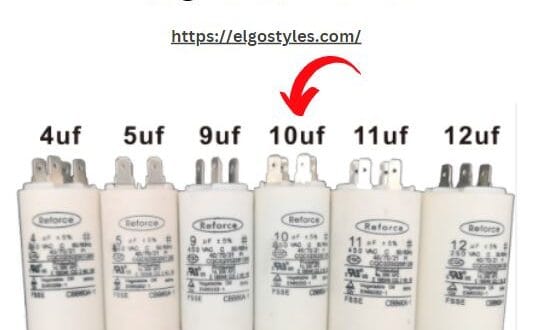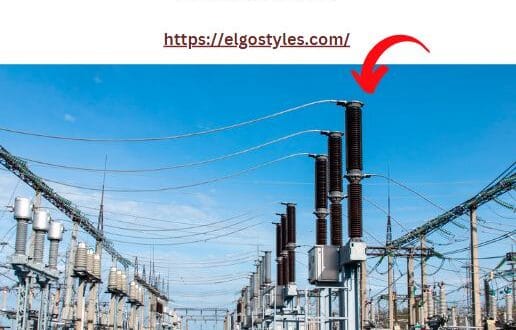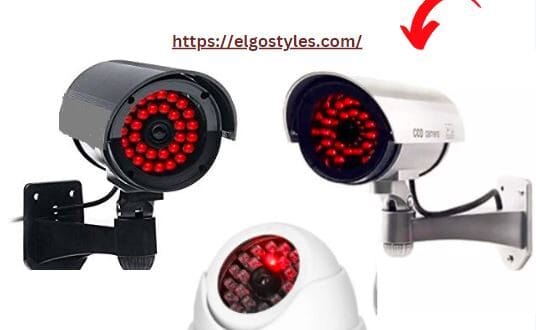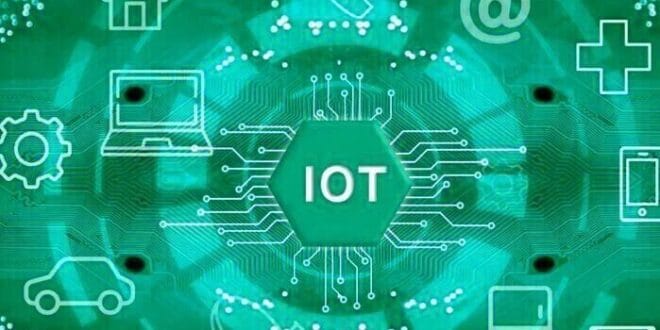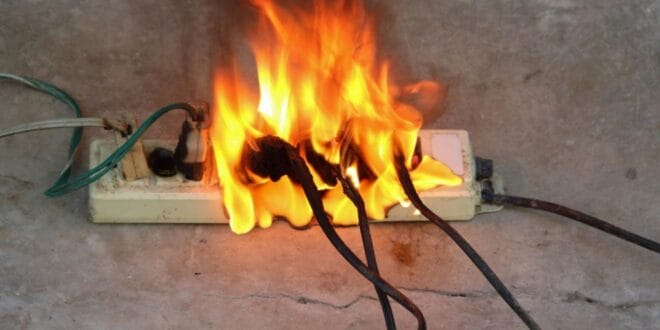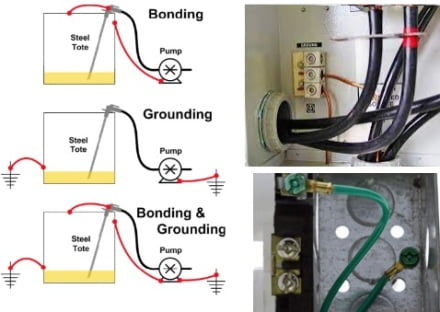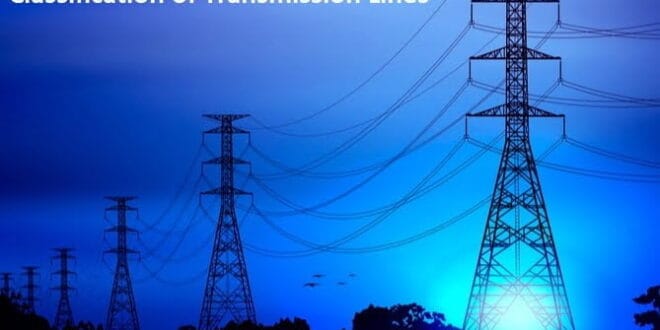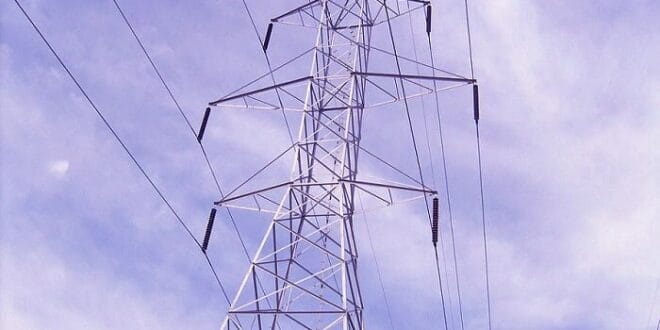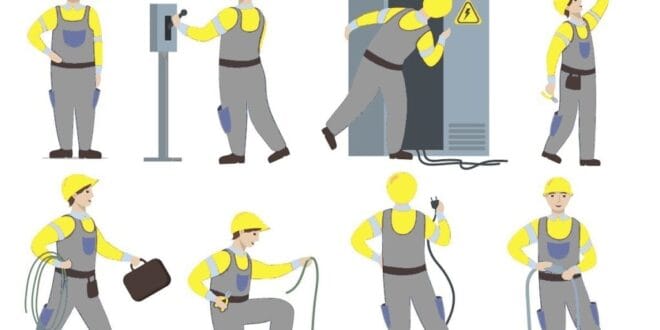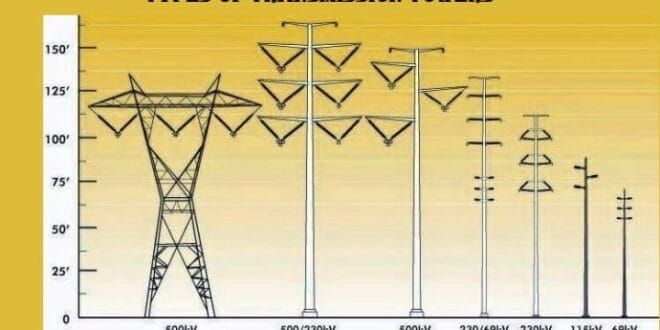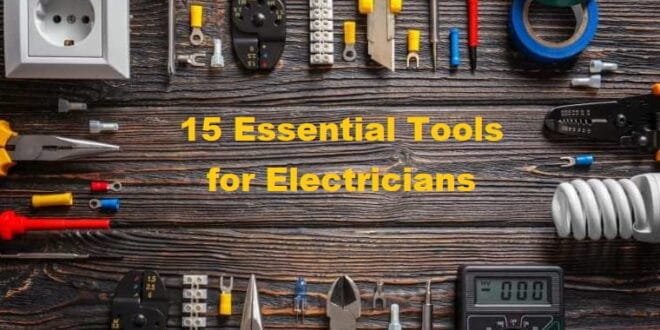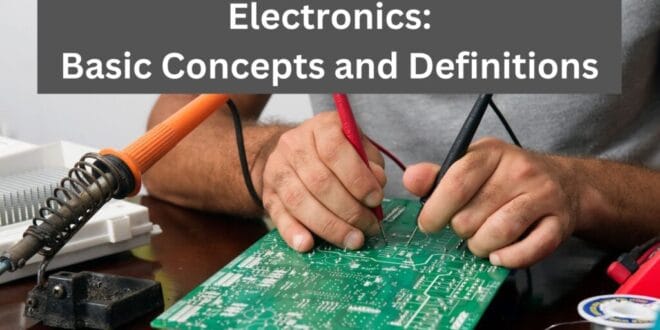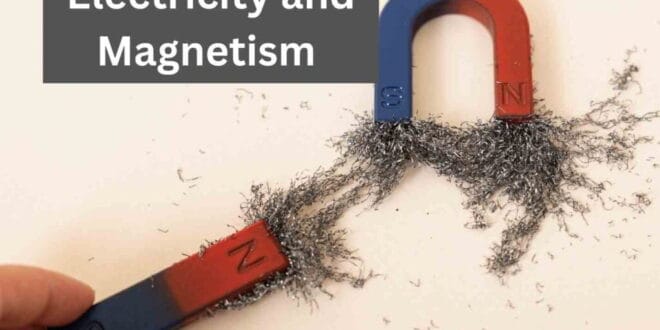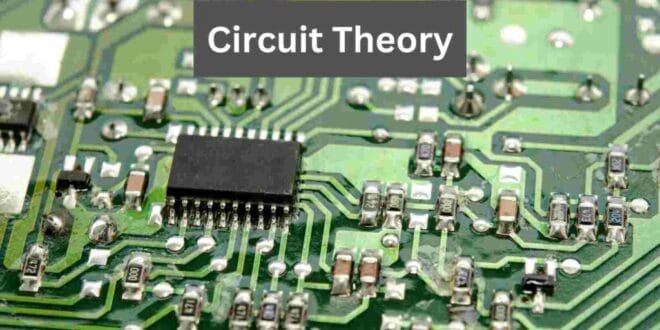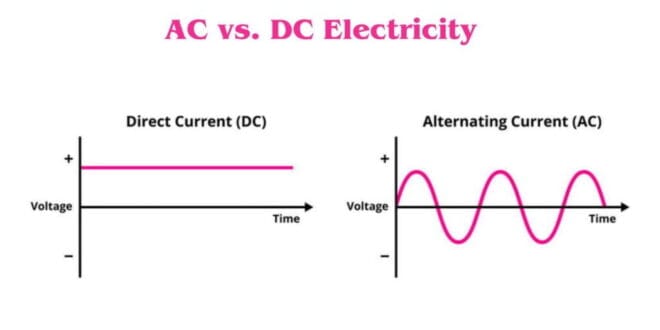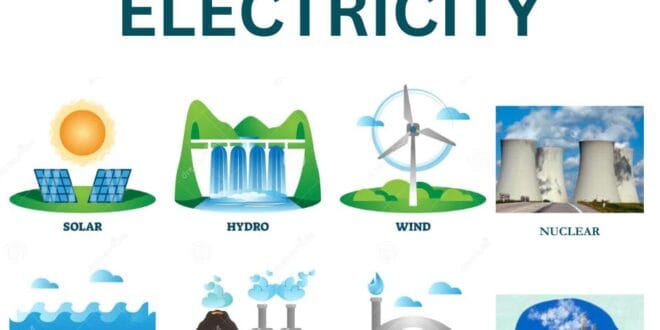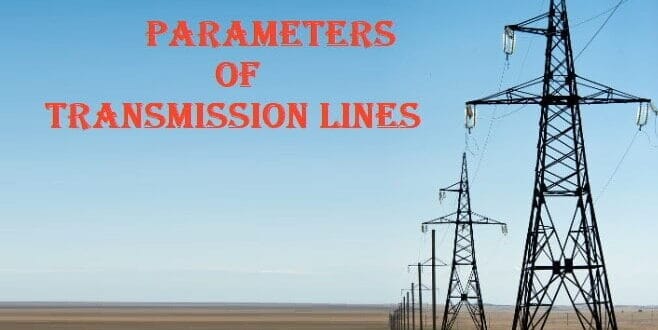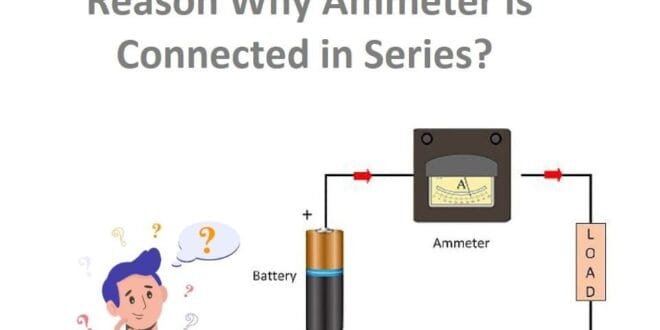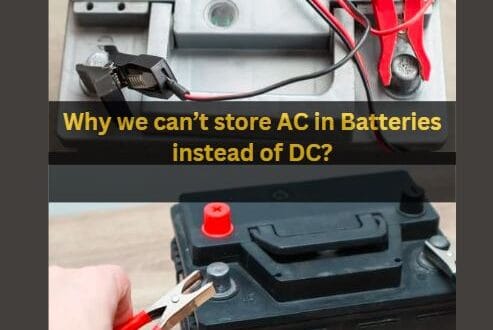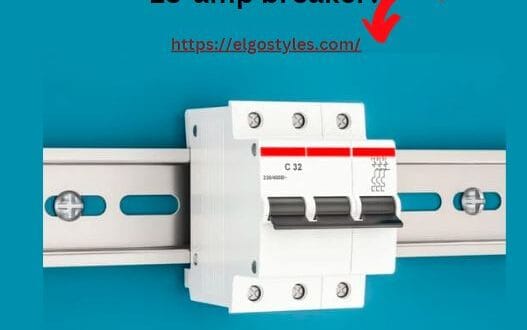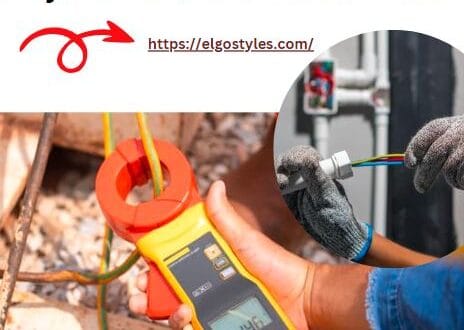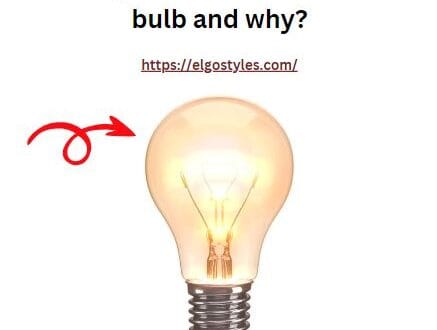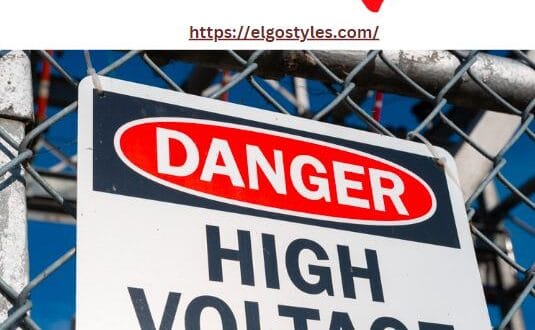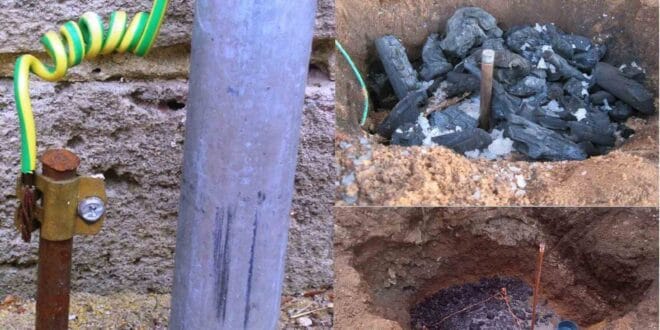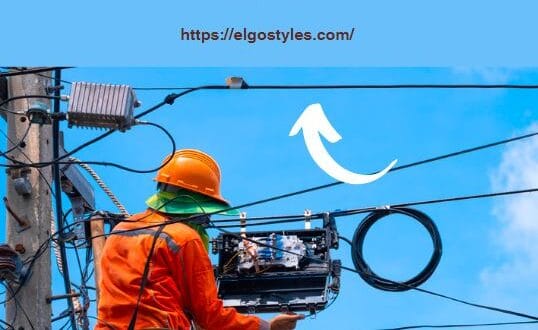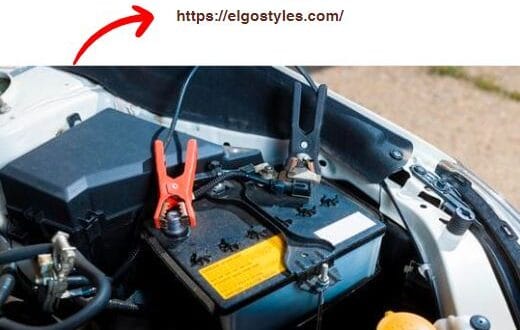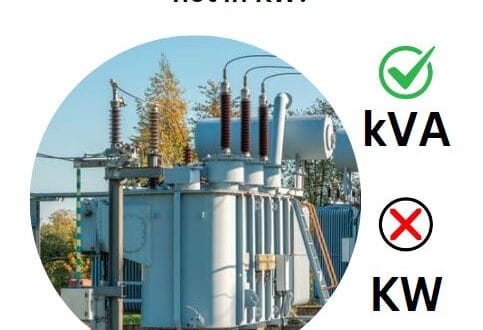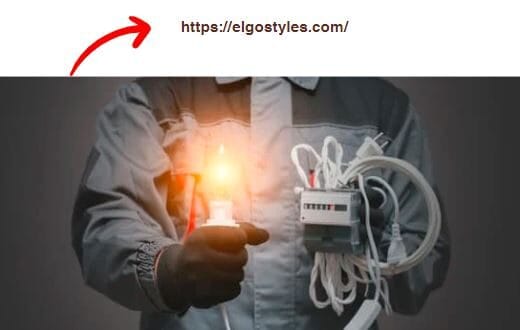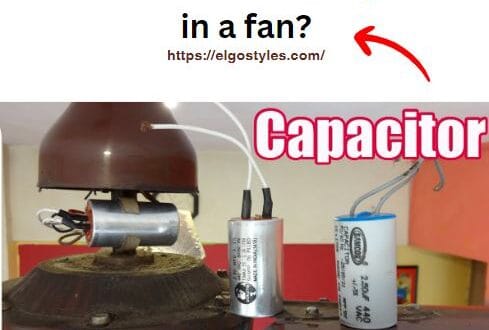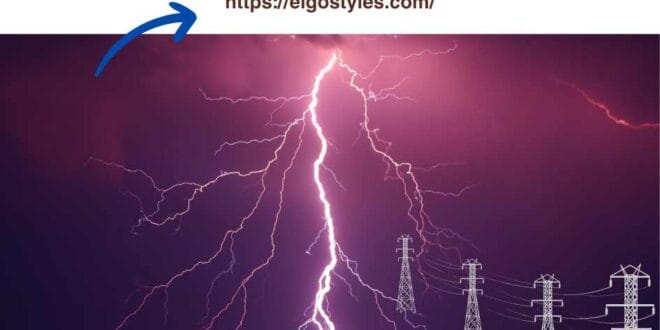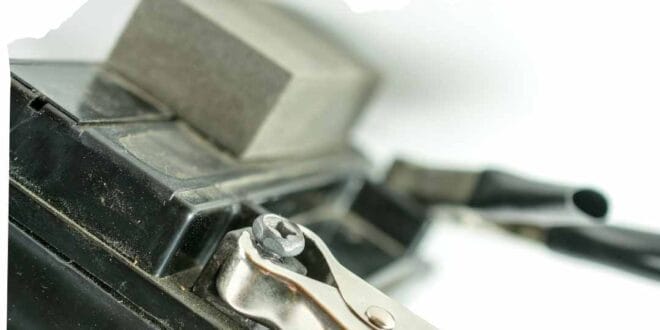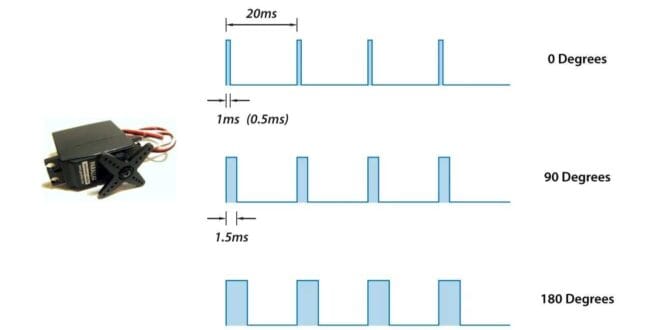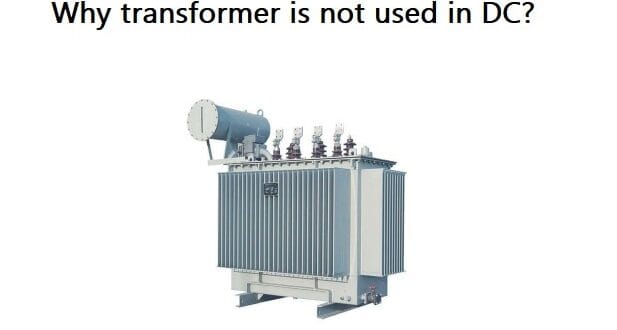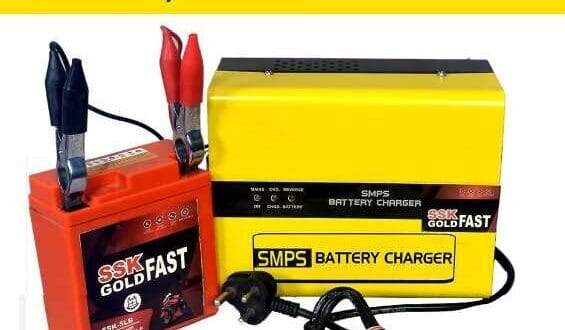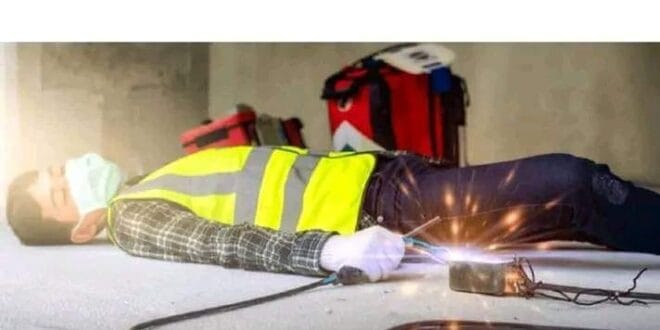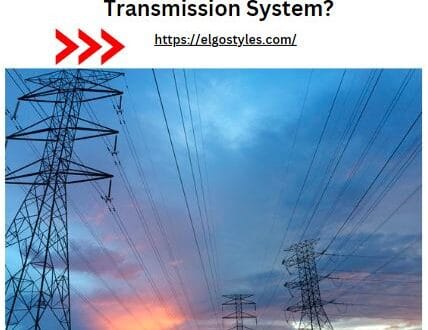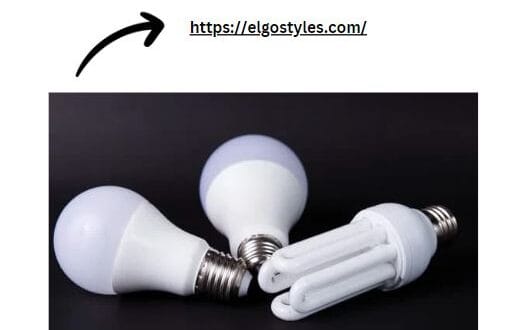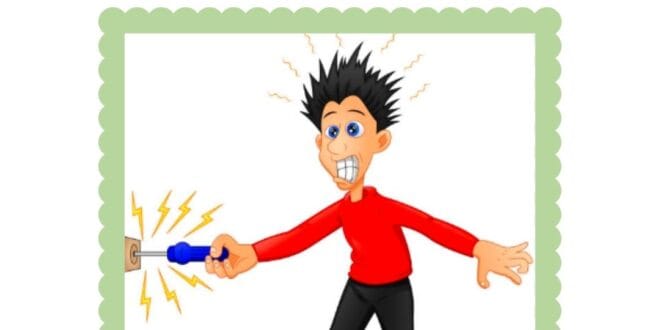April 2, 2024
Electrical
Electrical Distribution Substation: The Nerve Center of Power Delivery In the intricate web of electrical infrastructure, distribution substations play a pivotal role, serving as the critical juncture where high-voltage electricity is transformed and distributed to end-users at manageable voltages. These often inconspicuous yet indispensable facilities are the backbone of modern …
Read More »
April 2, 2024
Electronics
Multimeter Types and Their Applications Introduction Multimeters are indispensable tools used in various fields that involve electrical measurements. They play a vital role in diagnosing electrical problems, troubleshooting circuits, and ensuring accurate measurements of voltage, current, resistance, and other electrical parameters. Understanding the different types of multimeters and their applications …
Read More »
April 1, 2024
Electrical
Answer: The difference in voltage (110V vs. 220V) across countries is primarily due to historical, economic, and technical factors. Reasoning: The choice between 110V and 220V systems largely depends on historical development, economic considerations, and technical requirements. Countries like the United States and Japan typically use 110V due to early …
Read More »
April 1, 2024
Electrical
Answer: We use 400Hz power supply in aircraft for lighter, more efficient electrical systems, enabling smaller transformers and lighter cables. Reasoning: 400Hz power supply is utilized in aircraft due to several factors: Weight reduction: Higher frequency allows for smaller transformers and lighter cables, crucial for aircraft weight management. Efficiency: Electrical …
Read More »
April 1, 2024
Electrical
Answer: No, properly installed and maintained solar panels do not pose a direct electrocution risk to individuals. Reasoning: Solar panels generate electricity from sunlight through photovoltaic cells. The direct current (DC) produced by solar panels is typically low voltage, which is generally not enough to cause electrocution. However, improper installation, …
Read More »
April 1, 2024
Electrical
Answer: Yes, a ceiling fan running at a slower speed consumes less power (electricity units). Reasoning: Ceiling fans consume power based on their speed settings. Slower speeds require less energy to maintain, resulting in lower power consumption. This is because the fan’s motor operates at a reduced rate, resulting in …
Read More »
April 1, 2024
Electrical
Answer: Wearing anything metallic during an MRI can pose serious risks including tissue damage, burns, and even death due to the powerful magnetic fields of the MRI machine attracting metal objects. Reasoning: MRI machines use powerful magnets to generate images of the body’s internal structures. Metallic objects can become projectiles, …
Read More »
March 31, 2024
Electrical
Answer: Umbrellas are not allowed during substation visits due to the risk of electrical conductivity, which can lead to serious injury or even death. Reasoning: Umbrellas, typically made of metal or partially composed of metal, pose a significant risk in substations where there are high-voltage electrical equipment and conductors. The …
Read More »
March 30, 2024
Electrical
Answer: No, the power of a “zero-watt” bulb is not literally zero watts. Instead, it refers to a very low power consumption. These bulbs typically consume minimal energy, often less than a watt, hence the term “zero-watt.” However, they still have a small power rating, typically ranging from 0.5 to …
Read More »
March 30, 2024
Electrical
Answer: A Buchholz relay is a safety device used in oil-filled power transformers and reactors to detect faults such as gas accumulation, oil leakage, or overheating. It protects these equipment by triggering alarms or disconnecting them from the power supply in case of a fault. Reasoning: A Buchholz relay is …
Read More »
March 30, 2024
Electrical
Answer: Outlets and receptacles in hospitals are often installed upside down for safety reasons. Reasoning: In hospitals, upside-down outlets are a safety measure to prevent accidental disconnection of medical equipment. Placing the ground pin on top reduces the risk of objects falling into the sockets and causing a short circuit. …
Read More »
March 29, 2024
Electrical
Answer: The grounding wire is bare and not insulated to ensure effective dissipation of electrical charges into the ground, preventing electrical hazards. Reasoning: The grounding wire serves as a safety measure in electrical systems. It’s designed to provide a path of least resistance for electrical current to flow into the …
Read More »
March 29, 2024
Electrical
Electrical Inspections And Audits Introduction Electrical inspections and audits are crucial for ensuring the safety, reliability, and efficiency of electrical systems. They involve a comprehensive evaluation of electrical components, equipment, and procedures to identify potential hazards and ensure compliance with regulations and standards. In this context, it is important to …
Read More »
March 28, 2024
Electrical
Answer: Neither 50Hz nor 60Hz frequency in 120V/230V electricity is inherently more dangerous. The danger primarily depends on factors like current, duration of exposure, and individual susceptibility to electric shock. Reasoning: The danger of electric shock is not solely determined by frequency but also by other factors such as current, …
Read More »
March 28, 2024
Electronics
Answer: Connecting a polar capacitor the wrong way can lead to reverse voltage, causing the capacitor to fail catastrophically, potentially resulting in leakage, overheating, and even explosion. Reasoning: Polar capacitors, such as electrolytic capacitors, are designed to handle voltage in one direction. Connecting them the wrong way can subject them …
Read More »
March 28, 2024
Electrical
Answer: Electrical prongs have holes in them to enhance safety by allowing the prongs to securely grip the outlet’s contacts and create a stable electrical connection. Reasoning: The holes in electrical prongs serve multiple purposes. Firstly, they allow for the insertion of small metal tabs within the outlet’s sockets. These …
Read More »
March 28, 2024
Electronics
Answer: A bicycle stays upright due to the gyroscopic effect of the wheels, the bike’s steering mechanism, and the rider’s balance. Reasoning: A bicycle stays upright through a combination of factors. Firstly, the rotating wheels create gyroscopic forces that resist changes in orientation, helping the bike stay upright. Additionally, the …
Read More »
March 27, 2024
Electrical
Answer: The live wire is called the phase wire because it carries the alternating current (AC) that alternates in phase with the voltage, providing power to electrical devices. Reasoning: The term “live wire” refers to the wire that carries the alternating current (AC) from the power source to electrical devices. …
Read More »
March 27, 2024
Products
Automatic Wire Stringing Machine or Wire Cable Puller Product Description: Introducing the ultimate solution for efficient wire stringing – the Automatic Wire Stringing Machine. Designed to streamline the process of stringing wires, this cordless electric stringing wire puller operates at an impressive speed of 40m/min, making it an invaluable tool …
Read More »
March 27, 2024
Electrical
Answer: Aircraft leave contrails in the sky due to the condensation of water vapor from the aircraft’s exhaust gases. Reasoning: When aircraft engines burn fuel, they produce exhaust gases that contain water vapor and other substances. At high altitudes where the air is cold and humid, the hot exhaust …
Read More »
March 26, 2024
Electronics
Answer: In most cases, it’s challenging to determine the original resistance of a burnt or failed resistor. The damage caused by burning often alters the resistor’s properties, making it difficult to measure accurately. Reasoning: Physical Damage: Burnt resistors undergo physical changes, such as discoloration or even structural damage, making their …
Read More »
March 26, 2024
Electrical
Answer: Colored aerial marker balls on power lines are for enhancing visibility, especially for low-flying aircraft, to prevent accidents by making power lines more noticeable. Reasoning: Colored aerial marker balls serve as a visual aid to increase the visibility of power lines, particularly for low-flying aircraft such as helicopters and …
Read More »
March 26, 2024
Electronics
Answer: Selecting a capacitor value for a single-phase motor involves determining the motor’s horsepower, operating voltage, and starting torque requirements, then consulting motor manufacturer’s specifications or using online calculators for recommended capacitance values. Reasoning: When selecting a capacitor value for a single-phase motor, several factors need consideration. Firstly, determine the …
Read More »
March 25, 2024
Electrical
Answer: The function of a circuit breaker in a substation is to interrupt the flow of electrical current in case of overloads, short circuits, or other faults. This action protects the electrical system, equipment, and personnel from damage or injury. Reasoning: Circuit breakers serve as crucial safety devices in substations …
Read More »
March 24, 2024
Electronics
Answer: The small red lights around CCTV cameras are infrared LEDs (Light Emitting Diodes) used for night vision. They illuminate the area with infrared light, invisible to the human eye but visible to the camera, allowing it to capture clear images in low-light conditions. Reasoning: Infrared LEDs emit light in …
Read More »
March 23, 2024
Electrical
Safety Measures For Electrical Work Introduction Safety measures are crucial in electrical work to prevent injuries and fatalities caused by electrical hazards. Electrical work involves the use of electrical energy, which can be hazardous and potentially lethal if not handled properly. Therefore, following safety measures is critical to reduce the …
Read More »
March 23, 2024
Electronics
Revolutionizing Connectivity: The Power of IoT Device Remote Task Management Introduction: The Internet of Things (IoT) has transformed the way we live and work, connecting devices and systems to enhance efficiency, productivity, and convenience. One of the key aspects of this transformation is the ability to remotely manage tasks performed …
Read More »
March 22, 2024
Electrical
Common Electrical Faults and Their Causes Introduction Electrical systems are an integral part of modern life, powering everything from our homes to our workplaces and industries. However, like any other complex system, electrical systems are susceptible to faults and failures. These faults can range from minor inconveniences to major safety …
Read More »
March 21, 2024
Electrical
Grounding and Bonding in Electrical Systems Introduction Electrical safety is of paramount importance when it comes to the use of electrical systems. One of the most critical aspects of electrical safety is grounding and bonding. Grounding and bonding are essential practices that ensure safety and reliability of electrical systems. Grounding …
Read More »
March 20, 2024
Electrical
Classification of Transmission Lines Transmission lines play a pivotal role in the efficient and reliable distribution of electrical power over long distances. These lines are the arteries of modern electrical grids, facilitating the seamless transfer of electricity from power generation sources to end consumers. Classification of transmission lines is a …
Read More »
March 20, 2024
Electrical
Introduction To Transmission Lines Introduction: Transmission lines, the unsung heroes of modern infrastructure, serve as the critical conduits for the efficient flow of electrical power and communication signals. These intricate networks of cables and conductors form the lifelines that power homes, businesses, and industries while enabling global connectivity through data …
Read More »
March 20, 2024
Electrical
Electrical Safety Checklist & Tips Electricity is an indispensable part of our modern lives, powering everything from our homes and workplaces to our gadgets and appliances. However, while electricity has greatly improved our quality of life, it also poses potential hazards if not handled and managed properly. Electrical accidents can …
Read More »
March 19, 2024
Electrical
Types of Transmission Towers: Exploring Designs, Advantages, and Applications Introduction Transmission towers, often overlooked but integral to the power grid, come in various forms, each designed to meet specific requirements of power transmission. In this in-depth exploration, we will delve into five primary types of transmission towers, examining their designs, …
Read More »
March 18, 2024
Electronics
15 Essential Tools for Electricians Introduction Electricians play a crucial role in our modern world, ensuring that we have reliable access to electricity for our homes, businesses, and industries. To carry out their work effectively and safely, electricians rely on a variety of specialized tools. In this article, we will …
Read More »
March 18, 2024
Electronics
Understanding Basic Concepts and Definitions of Electronics Introduction Electrical and electronics engineering is a fascinating field that powers the technology-driven world we live in. In this introductory chapter, we will explore some fundamental concepts that serve as the building blocks for understanding and working with electricity and electronics. Understanding these …
Read More »
March 18, 2024
Electronics
Electricity and Magnetism – A Powerful Duo Introduction Electricity and magnetism are two captivating forces that shape our world in more ways than we can imagine. These forces, seemingly distinct, are intricately interconnected. In this article, we embark on a journey to unravel the mysteries of electricity and magnetism, aiming …
Read More »
March 18, 2024
Electronics
Electronic Components: Building Blocks of Modern Electronics Introduction In our increasingly digital and interconnected world, electronic components are the unsung heroes that power the devices we rely on every day. From the small resistor that regulates current to the complex integrated circuits that serve as the brains of our gadgets, …
Read More »
March 18, 2024
Electronics
Circuit Theory: Unraveling the Foundations of Electronics Introduction In the world of electronics and electrical engineering, understanding circuits is like grasping the alphabet before diving into reading and writing. Circuits are the fundamental building blocks of all electronic devices and systems. Circuit theory is the key that unlocks the fascinating …
Read More »
March 18, 2024
Electronics
Types of Electricity: AC vs. DC Electricity comes in various types, and one common way to categorize it is based on the flow of electric charge. The two primary types of electricity are Alternating Current (AC) and Direct Current (DC). Let’s explore the characteristics and applications of each: 1. Alternating …
Read More »
March 18, 2024
Electrical
Diodes and Its Types Introduction Diodes are essential semiconductor devices that play a crucial role in modern electronics. They are widely used in various applications, ranging from power rectification to signal modulation. This article will explore the concept of diodes, their working principles, and the different types of diodes available …
Read More »
March 18, 2024
Electrical
Sources of Electricity: A Dive into Power Generation Methods Introduction Electricity is an essential part of modern life, powering our homes, businesses, and industries. We often take it for granted, but understanding where our electricity comes from is vital for a sustainable and efficient future. Various sources of electrical power …
Read More »
March 18, 2024
Electrical
Understanding the Crucial Parameters of Transmission Lines Introduction: Transmission lines form the backbone of our power infrastructure, facilitating the efficient and reliable transfer of electricity over long distances. The design and performance of these transmission lines are influenced by a multitude of parameters, each playing a crucial role in determining …
Read More »
March 18, 2024
Electronics
Optocouplers – Types and Applications Introduction Optocouplers, also known as optoisolators, are essential electronic components that provide electrical isolation between input and output circuits. They utilize light to transmit signals, ensuring effective isolation and protection against voltage spikes, noise, and other electrical disturbances. Optocouplers find extensive use in a wide …
Read More »
March 18, 2024
Electronics
Resistors and Their Types Introduction In the world of electronics, resistors play a crucial role as passive components that control the flow of electric current. These unassuming components are fundamental to circuit design, enabling engineers and hobbyists to regulate voltage levels, limit current flow, and perform various signal conditioning tasks. …
Read More »
March 18, 2024
Electrical
Electrical Installations – Standards & Regulations around the World Introduction: Electrical installations are integral components of modern infrastructure, powering homes, businesses, and industries across the globe. To ensure the safety, reliability, and efficiency of these installations, various countries have established comprehensive standards and regulations. These guidelines, often developed by national …
Read More »
March 18, 2024
Electrical
Types of Electrical Testing Introduction Electrical testing is a crucial aspect of ensuring the safety, reliability, and efficiency of electrical systems. From the design and installation stages to ongoing maintenance, various types of electrical tests are conducted to identify potential issues, validate performance, and comply with regulatory standards. In this …
Read More »
March 18, 2024
Electronics
Why Voltmeter is Always Connected in Parallel? Introduction In the realm of electrical measurements, voltmeters are indispensable tools used to measure voltage across various components in circuits. Whether you’re a seasoned electrician, an engineering enthusiast, or simply curious about electrical instruments, understanding why voltmeters are always connected in parallel is …
Read More »
March 18, 2024
Electronics
Why ammeter is connected in series? Introduction In the world of electrical circuits and measurements, the ammeter holds a crucial position as an indispensable tool. An ammeter, short for “ampere meter,” is an instrument designed to measure the flow of electric current in a circuit. It provides valuable insights into …
Read More »
March 14, 2024
Electrical
Answer: The material generally used in a fuse wire is an alloy of tin and lead. Reasoning: Low Melting Point: Tin-lead alloy has a low melting point, ensuring it melts easily under excessive current. Good Conductivity: The alloy maintains good electrical conductivity, ensuring efficient current flow. Safety: It’s chosen for …
Read More »
March 14, 2024
Electrical
Answer: Electrical fuses are typically made from materials like glass, ceramic, or fiberglass-reinforced plastic. These materials are chosen for their ability to withstand high temperatures and provide insulation, ensuring safe operation. The fuse material must also have a predictable response to overcurrent conditions, quickly melting or breaking when current exceeds …
Read More »
March 13, 2024
Electrical
Answer: Live line washing is essential for maintaining electrical insulators on power lines. It removes accumulated pollutants, salt, and contaminants, preventing surface flashovers and ensuring uninterrupted power supply. Reasoning: Insulator Performance: Contaminants on insulators compromise their performance, leading to surface flashovers, disruptions, and potential equipment damage. Preventing Power Outages: Regular …
Read More »
March 13, 2024
Electrical
Answer: The lowest voltage that can potentially be lethal to humans is around 50 volts. However, the danger also depends on factors like current, resistance, and the path the electricity takes through the body. Reasoning: Threshold for Sensation: Voltages below 50 volts are often considered safe, as they may not …
Read More »
March 13, 2024
Electrical
Answer: AC (alternating current) cannot be stored directly in batteries because batteries inherently store and supply energy in a direct current (DC) form. The conversion from AC to DC is necessary for effective energy storage. Reasoning: Battery Chemistry: Batteries operate on chemical reactions, inherently producing direct current (DC) electricity. Storing …
Read More »
March 13, 2024
Electrical
Answer: Motor rating in kilowatts (kW) represents real power, which is the actual power consumed for mechanical work. Kilovolt-amperes (kVA) would include both real power and reactive power, but for motors, the emphasis is on real power. Reasoning: Real Power vs. Apparent Power: Kilowatts (kW) represent real power, reflecting the …
Read More »
March 12, 2024
Electrical
Answer: A 15-amp breaker typically trips when the current exceeds 15 amps. Reasoning: A 15-amp breaker is designed to protect circuits from overcurrents. If the current surpasses 15 amps, the breaker interrupts the circuit to prevent overheating and potential hazards, ensuring safety. FAQs: Q: What is the purpose of a …
Read More »
March 12, 2024
Electrical
Answer: Overhead transmission lines are not insulated primarily because insulation is unnecessary and impractical for high-voltage lines. Insulation adds complexity, cost, and maintenance challenges without significant benefits. Reasoning: Economical Considerations: Installing insulation on overhead lines is costly and doesn’t justify the added expense for the benefits gained in most scenarios. …
Read More »
March 9, 2024
Electronics
Answer: A Field-Effect Transistor (FET) is a voltage-controlled device as its operation is primarily governed by the voltage applied to the gate terminal. Reasoning: In an FET, the gate voltage establishes an electric field that controls the flow of charge carriers between the source and drain terminals. This voltage-induced field …
Read More »
March 9, 2024
Electrical
Answer: We return neutral to Earth to maintain environmental balance and sustainability, minimizing human impact on ecosystems. Reasoning: Returning neutral to Earth is crucial for environmental preservation. Human activities, from industrial processes to energy consumption, release various pollutants and emissions, upsetting the natural balance. By adopting neutral practices, we aim …
Read More »
March 9, 2024
Electrical
Answer: The gas filled in an electric bulb is usually inert, like argon or krypton. These gases prevent filament oxidation, ensuring prolonged bulb life by maintaining a stable environment inside. Reasoning: Inert Nature: Argon and krypton are chemically inert, preventing reactions with the filament. Oxidation Prevention: Inert gases protect the …
Read More »
March 8, 2024
Electrical
Answer: The tiny cylinder in power cords and cables is a ferrite bead, designed to reduce electromagnetic interference and ensure smooth power transmission. Reasoning: The tiny cylinder is a ferrite bead, typically made of ferrite material, which is a type of ceramic compound. It is placed around the power cord …
Read More »
March 6, 2024
Electrical
Answer: Both AC and DC can be harmful, but the severity of harm depends on various factors like voltage, current, and duration of exposure. Reasoning: he harmfulness of a current depends on factors such as voltage, current intensity, and duration of exposure. Both AC (alternating current) and DC (direct current) …
Read More »
March 6, 2024
Electrical
Answer: Transmission line voltages like 11kV, 33kV, and 66kV are standard designations based on practical considerations, system requirements, and historical conventions. These values optimize efficiency, cost, and technical feasibility. Reasoning: System Compatibility: Standardizing transmission voltages promotes system compatibility, facilitating the interconnected operation of power grids and ensuring efficient energy transfer. …
Read More »
March 6, 2024
Electronics
Answer: The cord of an electrical heater does not glow because it is made of a material with higher electrical resistance compared to the heating elements. The high resistance in the cord prevents significant current flow, minimizing heat generation and eliminating the glow effect. Reasoning: Material Composition: The cord is …
Read More »
March 6, 2024
Electrical
Answer: A good ground resistance value is typically below 5 ohms. However, specific standards or applications may have different acceptable ranges. Lower resistance values ensure efficient grounding and electrical safety. Reasoning: Efficient Grounding: Low ground resistance allows efficient dissipation of electrical currents into the ground, minimizing the risk of electric …
Read More »
March 6, 2024
Electrical
Answer: “High Voltage” signs are used because high voltage can lead to increased current flow, and it is the current that poses the primary risk of injury or death. High voltage can cause current to surge, creating hazardous conditions. Reasoning: Voltage and Current Relationship: Ohm’s Law (V = I * …
Read More »
March 4, 2024
Electrical
Why Salt and charcoal are added to the earthing pit? Answer: Salt and charcoal are added to the earthing pit to enhance soil conductivity. Salt improves water retention in the soil, ensuring a consistent moisture level, while charcoal aids in preventing corrosion and maintaining low resistance for effective grounding. Reasoning: …
Read More »
March 4, 2024
Electrical
Answer: Busbars are used in electrical power distribution systems to conduct and distribute electrical currents efficiently. They are commonly found in switchgear, distribution boards, and industrial facilities where multiple electrical components need to be connected. Reasoning: Busbars provide a sturdy and efficient way to distribute electrical power within a system. …
Read More »
March 3, 2024
Electronics
Answer: Current causes heat. When current flows through a resistive material, it encounters resistance, leading to the generation of heat according to Joule’s Law (P = I²R). Reasoning: Voltage represents the force that drives current, and resistance impedes the flow of current. When current encounters resistance (R), it experiences a …
Read More »
March 3, 2024
Electrical
Answer: Yes, 3000 volts can hurt a human. Electric shock at this voltage level can cause severe injury or even be fatal. Reasoning: At 3000 volts, electrical currents can pass through the human body, disrupting normal physiological functions. This can lead to tissue damage, burns, and interference with the nervous …
Read More »
March 3, 2024
Electrical
Answer: Connecting a battery directly to an AC supply can result in damage to the battery, potential leakage, overheating, and, in extreme cases, may lead to a fire or explosion. Reasoning: Batteries are designed for DC (direct current) input, and connecting them to an AC (alternating current) supply can cause …
Read More »
March 1, 2024
Electrical
Answer: No, it is not safe to daisy chain power strips and extension cords. Doing so can overload circuits, increase the risk of electrical fires, and violate safety standards. Reasoning: Daisy chaining power strips and extension cords can lead to overloading circuits, creating a fire hazard. Each additional connection increases …
Read More »
March 1, 2024
Electrical
Answer: Electric testers may not work on DC current due to their design for AC detection. They rely on the alternating nature of AC to induce a magnetic field, causing a response. DC lacks this alternating flow, rendering the tester ineffective. Reasoning: Electric testers, such as non-contact voltage testers, are …
Read More »
March 1, 2024
Electrical
Answer: The gas commonly used in refrigerators is a hydrofluorocarbon (HFC) refrigerant, such as R134a or R600a. A fridge cannot operate without gas as the refrigerant is crucial for the heat exchange process essential for cooling. Reasoning: Refrigerators rely on a cycle of compression and expansion of the refrigerant gas …
Read More »
March 1, 2024
Electrical
Answer: Transformers are rated in kVA (kilo-volt-amperes) instead of kW (kilowatts) because kVA accounts for both real power (kW) and reactive power, which is essential for sizing and designing electrical systems. Reasoning: Transformers are devices used to transfer electrical energy between circuits. They handle both real power (expressed in kilowatts, …
Read More »
March 1, 2024
Electrical
Answer: Voltage and current are different aspects of electrical systems. Neither is inherently more powerful than the other; their significance depends on the context and application. Reasoning: Voltage and current are fundamental electrical quantities. Voltage (measured in volts) is the potential energy per unit charge, while current (measured in amperes) …
Read More »
February 29, 2024
Electrical
Answer: Yes, voltage can be lost as heat due to resistance in a conductor. -= Can voltage be lost as heat Reasoning: Voltage is the electric potential difference that drives the flow of electric current. When current passes through a conductor with resistance, such as a wire, some energy is …
Read More »
February 29, 2024
Electronics
Answer: Electronic circuits primarily use DC (Direct Current) instead of AC (Alternating Current) because DC provides a stable and consistent voltage, making it easier to control and regulate electronic components. Reasoning: Stability: DC maintains a constant voltage, crucial for the stability of electronic components. Simplicity: DC circuits are simpler to …
Read More »
February 29, 2024
Electrical
Answer: Current is not inherently “better” than voltage; they are different aspects of electrical systems. Current and voltage are interdependent, and their relationship is defined by Ohm’s Law (V=IR). However, the choice between emphasizing current or voltage depends on the specific application and requirements of the electrical system. Reasoning: The …
Read More »
February 29, 2024
Electrical
Answer: A capacitor in a fan is used to create a phase difference between the current flowing to the motor’s start and run windings, facilitating the motor’s rotation and providing the necessary torque. Reasoning: The capacitor in a fan serves to create a phase shift in the current supplied to …
Read More »
February 28, 2024
Electrical
Answer: No, a fuse is designed to protect devices from overcurrent, not to prevent electrocution. Reasoning: No, a fuse will not stop a person from being electrocuted. A fuse primarily functions as a protective device against overcurrent situations in an electrical circuit. Its primary purpose is to break the circuit …
Read More »
February 28, 2024
Electrical
Answer: Lightning is a complex phenomenon that involves both AC (alternating current) and DC (direct current) components. Reasoning: Lightning begins with the formation of charge imbalances in clouds, resulting in a potential difference. The initial discharge is primarily DC, but as the lightning bolt progresses, it exhibits an AC nature …
Read More »
February 28, 2024
Electronics
Answer: Both current and voltage are important in electrical systems, but their significance depends on the context. In general, neither matters more than the other; they are interrelated through Ohm’s Law (V = I * R). The importance of current or voltage depends on the specific application and the characteristics …
Read More »
February 28, 2024
Electrical
Answer: A 12V car battery generally cannot electrocute you due to its low voltage. The human body’s resistance limits the current flow, preventing a lethal shock. However, caution should be exercised around car batteries to avoid short circuits and chemical exposure. Reasoning: Low Voltage: A 12V car battery is not …
Read More »
February 28, 2024
Electronics
Answer: No, 12 volts typically cannot hurt you. Reasoning: A 12-volt electrical system is generally considered safe for humans. The voltage is too low to penetrate the skin and cause harm. However, caution should still be exercised as factors like high current, wet conditions, or pre-existing health conditions may increase …
Read More »
February 26, 2024
Electrical
Answer: Electrical power line and substation faults are typically caused by factors like weather, equipment failures, or human error. However, occasionally, unusual or odd circumstances can lead to faults. These anomalies can have unexpected and sometimes bizarre causes that disrupt the electrical supply. Reasoning: The most unusual or odd …
Read More »
February 25, 2024
Electronics
Answer: Submarine internet cables are laid in the ocean to enable global data transmission, providing high-speed, secure, and reliable connectivity between continents. Reasoning: Underground internet cables in the ocean, known as submarine or undersea cables, are essential for global communication and internet connectivity. Here’s why they are laid underwater: Global …
Read More »
February 25, 2024
Electronics
Answer: The output signal from a servo motor controller is a pulse-width modulation (PWM) signal. This signal consists of a series of pulses with varying widths, where the width of each pulse corresponds to the desired position of the servo motor’s output shaft. The servo motor interprets these pulses and …
Read More »
February 25, 2024
Electrical
Answer: Transformers are not used in direct current (DC) systems because they rely on the principle of electromagnetic induction, which requires a changing magnetic field to induce voltage and current in the secondary winding. In a DC system, the current flows in a constant direction, creating a steady magnetic field …
Read More »
February 25, 2024
Electronics
Answer: DC current is used to charge batteries because batteries are designed to store direct current (DC) energy. Charging them with alternating current (AC) would require additional components like rectifiers, making the process more complex and less efficient. Reason: DC (direct current) is preferred for charging batteries due to its …
Read More »
February 25, 2024
Electrical
Which Current Is More Dangerous AC or DC? Answer: In terms of physiological effects on the human body, AC (Alternating Current) is generally considered to be more dangerous than DC (Direct Current) at certain frequencies and amplitudes. This is primarily due to the “let-go” phenomenon and the potential for sustained …
Read More »
February 25, 2024
Electrical
What kind of water do you put in batteries? Answer: For most batteries, you should use distilled water. It’s free from impurities that could interfere with the battery’s performance. However, not all batteries require water; some are sealed and maintenance-free. Always check the manufacturer’s instructions before adding water to any …
Read More »
February 25, 2024
Electrical
Answer: In Star vs. Delta: Delta configuration is preferred over star configuration in motor applications due to its ability to provide higher starting torque, reduced voltage drop, simplified control, reduced current imbalance, space and weight considerations, potential cost efficiency, and suitability for induction motors requiring higher starting torque. Reasoning: Delta …
Read More »
February 25, 2024
Electrical
Answer: The motor commonly used in ceiling fans is an induction motor. Reasoning: Ceiling fans typically use single-phase induction motors. These motors are chosen for ceiling fans due to their efficiency, simplicity, and cost-effectiveness. Induction motors work based on electromagnetic induction, a fundamental principle in physics. When an alternating current …
Read More »
February 25, 2024
Electrical
Answer: The main difference between AC (Alternating Current) and DC (Direct Current) transmission systems lies in the direction of current flow. AC changes direction periodically, while DC maintains a constant flow in one direction. Reasoning: Current Direction: AC changes direction continuously, while DC maintains a constant direction. Voltage Levels: AC …
Read More »
February 25, 2024
Electrical
Answer: Current is usually more fatal than voltage. The severity of an electric shock depends on the amount of current passing through the body, with higher currents being more dangerous. Voltage, on the other hand, determines the potential for current flow. Reasoning: While voltage represents the force or pressure pushing …
Read More »
February 25, 2024
Electrical
Answer: No, volts are not stronger than watts. Volts and watts are different units of measurement for electricity. Volts measure electrical potential, while watts measure power, which is the rate at which energy is used or produced. Reasoning: Volts and watts are distinct concepts in electricity. Volts represent the force …
Read More »
February 24, 2024
Electrical
Answer: You can feel a shock at voltages as low as 50 volts, but the severity and potential harm increase with higher voltages. Reasoning: Voltage is a measure of electric potential difference. The human body is a conductor, and when exposed to voltages above 50 volts, electrical currents can flow …
Read More »
February 24, 2024
Electrical
Answer: Yes, the 20-80% rule is generally effective in extending battery life, as it helps mitigate stress on lithium-ion batteries commonly used in electronic devices. Reasoning: Lithium-ion batteries degrade faster at extreme charge levels. By keeping the charge between 20% and 80%, you minimize stress on the battery, slowing down …
Read More »
February 23, 2024
Electrical
Answer: The output of a UPS (Uninterruptible Power Supply) can be either AC (Alternating Current) or DC (Direct Current), depending on the type of UPS. Most common UPS units provide AC output, while some specialized units can deliver DC output for specific applications. Reasoning: The output of a UPS (Uninterruptible …
Read More »
February 23, 2024
Electrical
Answer: A transistor is called a current control device because it regulates the flow of electric current between its terminals by using a small input current to control a larger output current. This property is essential for its role in amplification, switching, and signal processing in electronic circuits. Reasoning: A …
Read More »
 Electrical Engineering World Wiring a Brighter Tomorrow!
Electrical Engineering World Wiring a Brighter Tomorrow!

